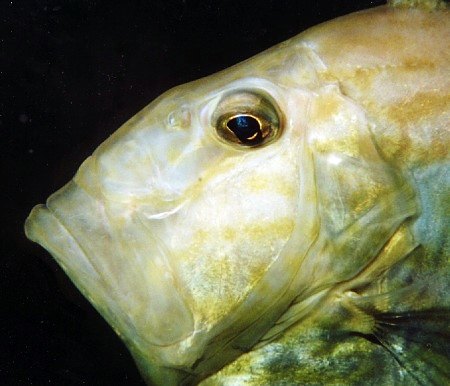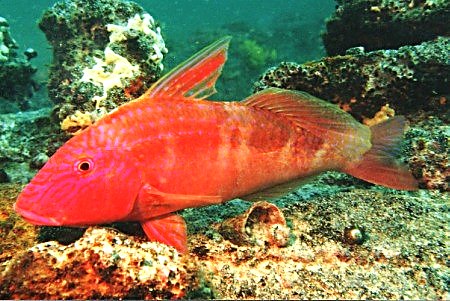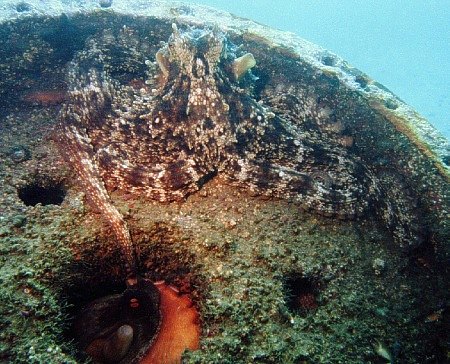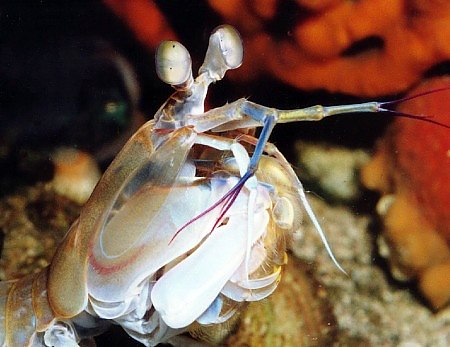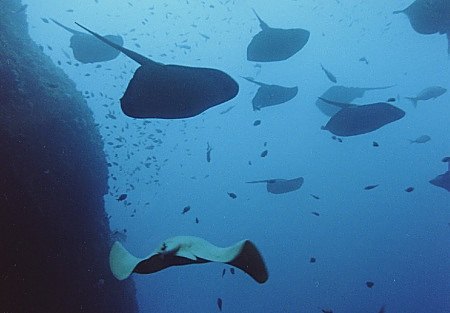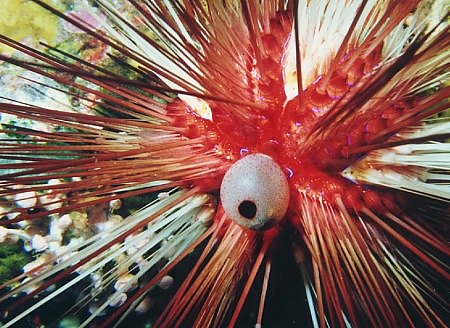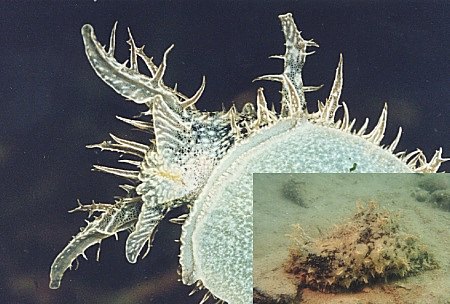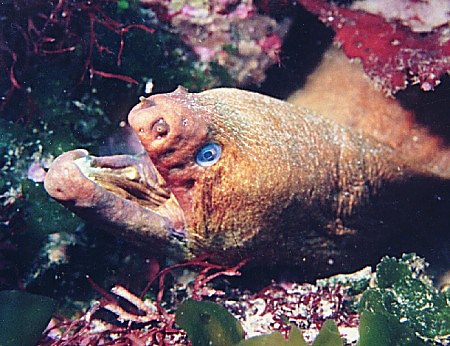prev
next
end
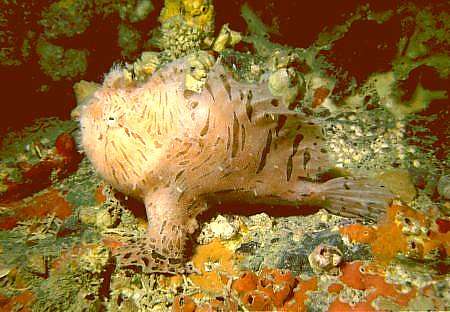
The zebra frogfish (also called striped anglerfish) is rare for New Zealand. It must have arrived as a swimming larva in the warm currents arriving from the north. Its breast fins (arms) have been developed into walking legs with proper little hands at their ends. Its rear legs (ventral fins) are usually placed in front of these. Between its eyes it has one dorsal spine modified into an angling device that it can swing freely in front of its mouth. At the end of this fishing rod sits a flap of skin that looks very much like a little worm. Camouflaged by its stripes and furry skin, the zebra fish waits in ambush until a hapless fish tries to catch the worm. This fish was photographed in Whangaroa Harbour.

